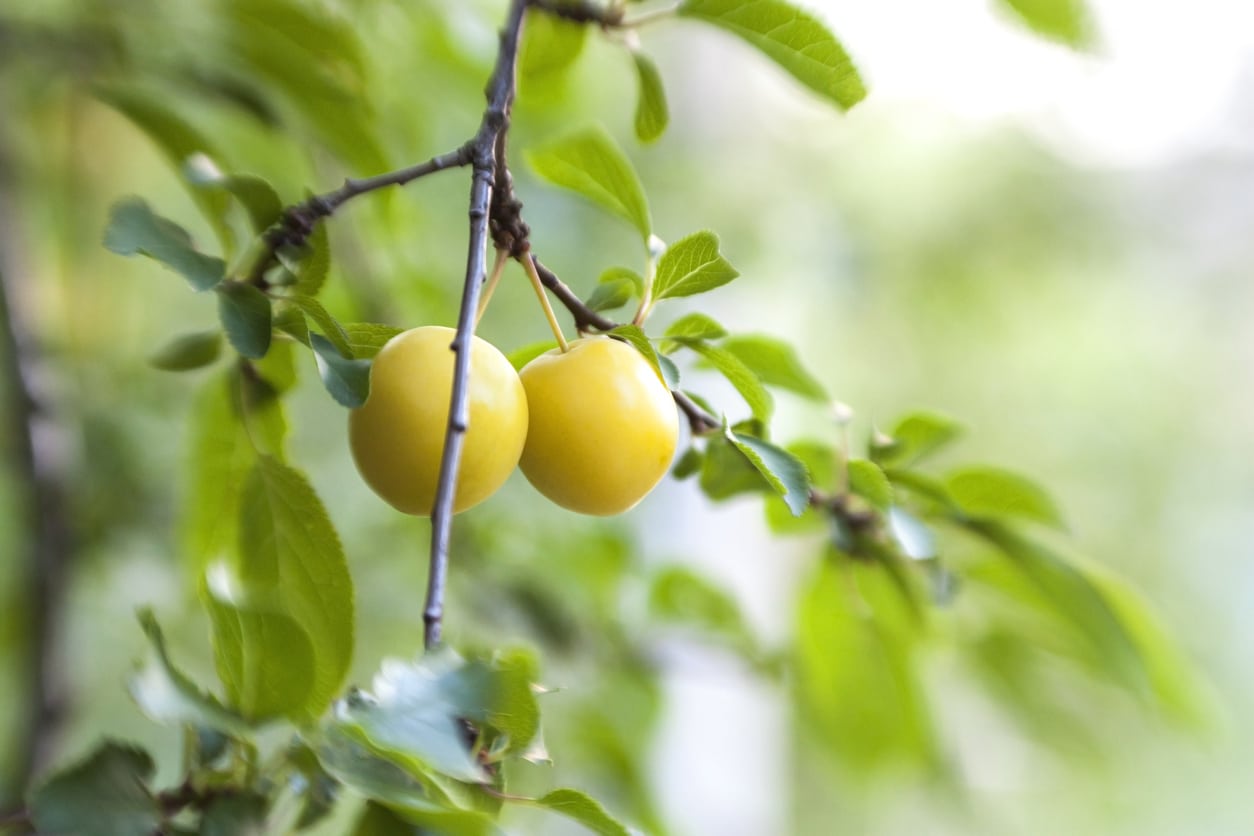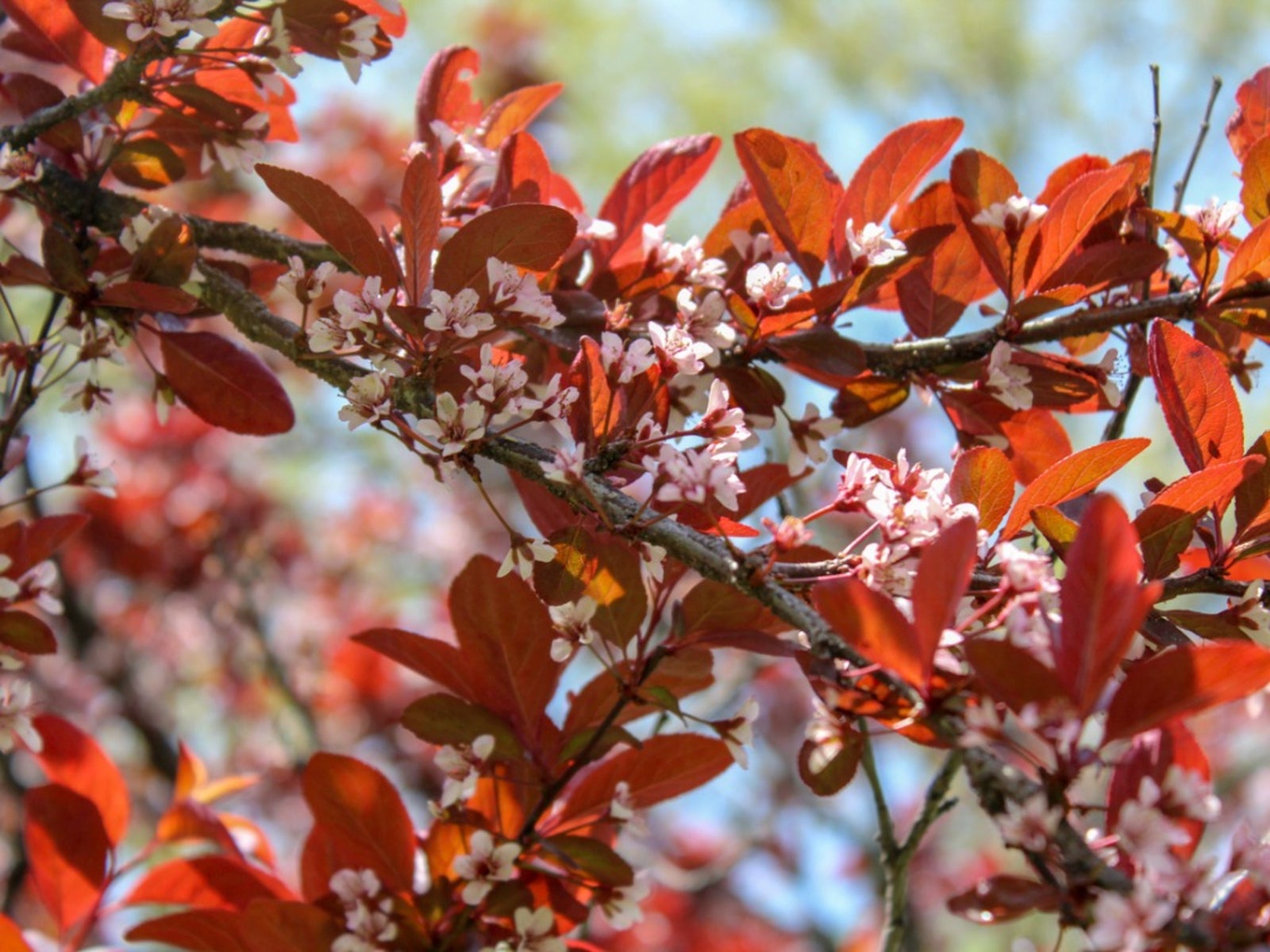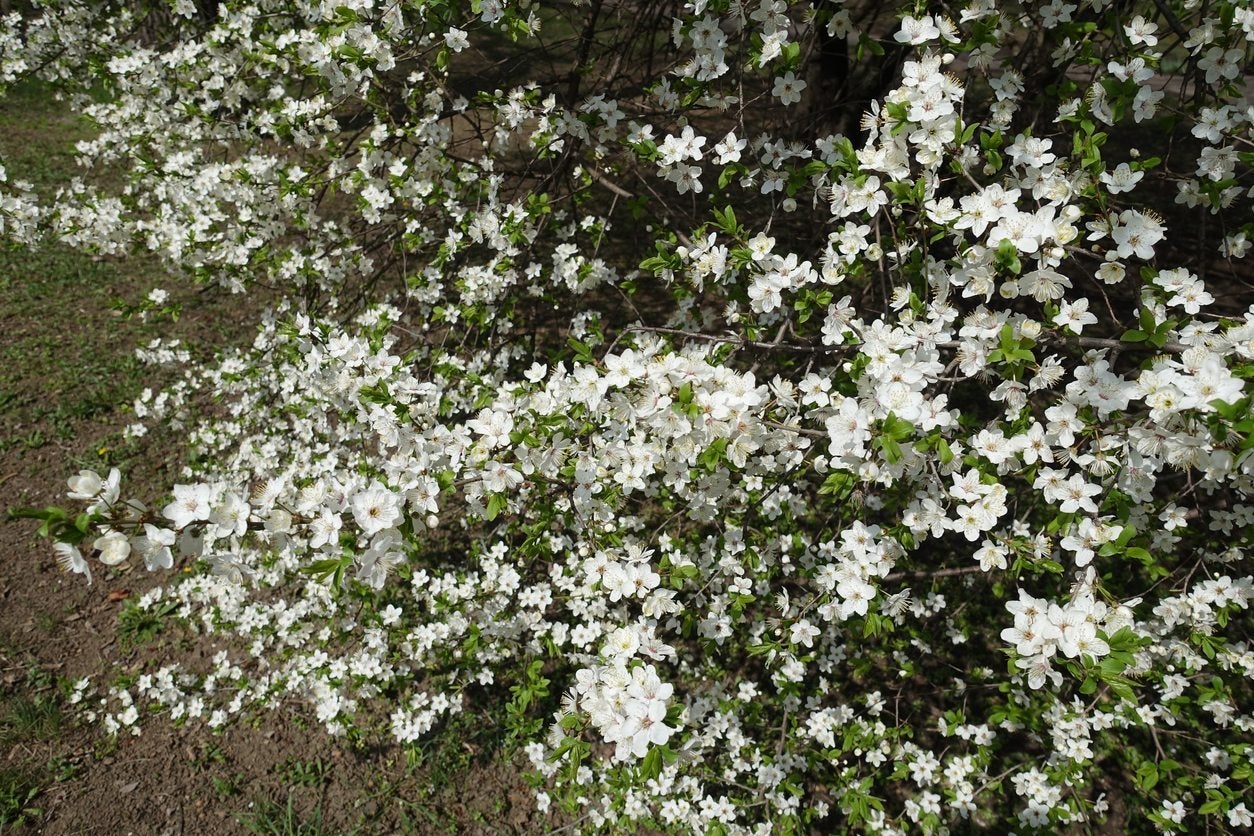Golden Sphere Cherry Plum Trees – How To Grow Golden Sphere Cherry Plums

If you love plums and want to add a little variety to the landscape, try growing a Golden Sphere plum. Golden Sphere cherry plum trees bear large, golden fruit about the size of an apricot that contrasts nicely with other fruit in fruit salads or tarts but can also be eaten fresh out of hand, juiced or preserved.
About Cherry Plum Golden Sphere
Golden Sphere cherry plum trees hail from the Ukraine and are readily available through much of Europe. These deciduous plum trees have a rounded to spreading habit. Foliage is ovate and dark green accented by white blooms in the spring. The ensuing fruit is large and golden-yellow outside and in. Cherry plum makes a lovely addition to the garden either as a fruit tree or specimen tree and can be grown in the garden or in a container. Height of cherry plum Golden Sphere at maturity is about 9-11 feet (3 to 3.5 m.), perfect for a smaller landscape and low enough for easy harvest. Golden Sphere is very hardy and fruit is ready for harvest mid-season. It is hardy in the United Kingdom to H4 and in the United States zones 4-9.
How to Grow Golden Sphere Cherry Plums
Bare root cherry plum trees should be planted between November and March while potted trees may be planted any time of year. When growing a Golden Sphere plum, choose a site with well-drained, moderately fertile soil in full sun, at least six hours per day. Prepare the area by removing any weeds; dig a hole that is as deep as the root ball and twice as wide. Gently loosen the roots of the tree. Set the tree in the hole, spreading the roots out, and backfill with a mix of half the existing soil and half compost. Stake the tree. Depending upon weather, water the tree deeply with an inch (2.5 cm.) of water per week. Prune the tree in the early spring just before it breaks dormancy. At planting, remove the lowest lateral branches and prune the rest back to around 8 inches (20 cm.) in length. In successive years, remove water sprouts from the main stem as well as any crossing, diseased or damaged branches. If the tree looks cramped, remove some of the larger branches to open the canopy. This type of pruning should be done in the spring or mid-summer.
Gardening tips, videos, info and more delivered right to your inbox!
Sign up for the Gardening Know How newsletter today and receive a free copy of our e-book "How to Grow Delicious Tomatoes".

Amy Grant has been gardening for 30 years and writing for 15. A professional chef and caterer, Amy's area of expertise is culinary gardening.
-
 Moody Blooms For Spring: 8 Types Of Black Flowers To Add Drama To Spring Displays
Moody Blooms For Spring: 8 Types Of Black Flowers To Add Drama To Spring DisplaysFrom midnight burgundies to inky violets, several types of black flowers can enrich and embolden a spring display. Try these brooding bloomers for a moody garden
By Tonya Barnett
-
 My Homemade Orchid Fertilizer Always Brings More Blooms – Here's The Easy Recipe That Transforms Plants
My Homemade Orchid Fertilizer Always Brings More Blooms – Here's The Easy Recipe That Transforms PlantsScientist-turned-gardener Mary Ellen Ellis shares her tried-and-tested DIY orchid fertilizer recipe, plus more ingredients to try for healthy, happy plants.
By Mary Ellen Ellis
-
Cherry Plum ‘Ruby’ Info: Learn About Ruby Cherry Plum Care
Ruby cherry plum fruit is sweeter than most cherry plums, but still has slightly tangy flavor. Try growing Ruby cherry plums for use in canning, baking and other culinary pursuits. The following article will help get you started.
By Bonnie L. Grant
-
Gypsy Cherry Plum Info – Caring For Gypsy Cherry Plum Trees
Gypsy cherry plum trees produce large, dark red fruit that looks much like a large Bing cherry. Originating in the Ukraine, cherry plum ‘Gypsy’ is a cultivar favored throughout Europe and is hardy to H6. The following Gypsy cherry plum info will help with growing this tree.
By Amy Grant
-
 Newport Plum Info: Learn How To Grow A Newport Plum Tree
Newport Plum Info: Learn How To Grow A Newport Plum TreeNot everyone has room for a large tree. As a landscape designer and garden center worker, I often suggest smaller ornamentals for these situations. Newport plum is one. Click this article for Newport plum info and helpful tips on how to grow a Newport plum.
By Darcy Larum
-
 Myrobalan Plum Pruning Info: How To Prune Myrobalan Cherry Plums
Myrobalan Plum Pruning Info: How To Prune Myrobalan Cherry PlumsShould I cut back Myrobalan plum? While frequent or excessively trimming a cherry plum is not recommended, it may be necessary at times. Click on the article the follows to learn when and how to prune Myrobalan cherry plums.
By Darcy Larum
-
 Cherry Plum Information – What Is A Cherry Plum Tree
Cherry Plum Information – What Is A Cherry Plum Tree?Cherry plum? a group of Asian plum trees that are commonly called cherry plum trees. It could also refer to the hybrid fruits which are literally a cross between plums and cherries. This article will explain the differences of trees commonly called cherry plums.
By Darcy Larum